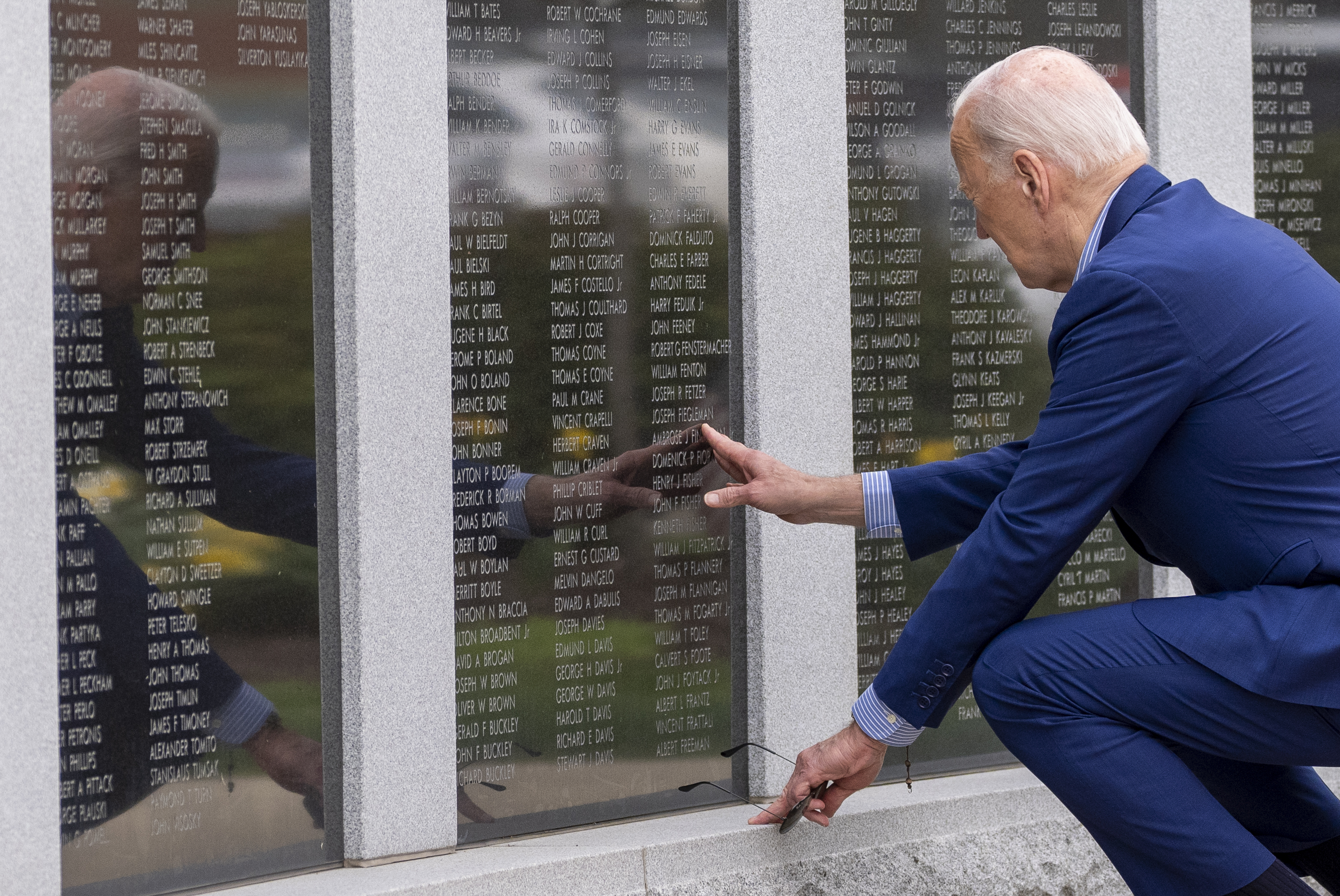"The best part of baseball today is its yesterdays," Lawrence Ritter, the author of one of the game's finest and most celebrated books, "The Glory of Their Times," liked to say.
We hear a lot these days, from the offices of Major League Baseball on down, about how baseball needs to change, to adapt, to evolve so the problems adversely impacting attendance and attention can be solved.
There are too many strikeouts, they say. Not enough hits. Too much shifting. Games that stretch into eternity and bore people, driving them to the high-intensity pop of the NBA and the NFL.
But baseball's different, right? It's the national pastime, a secular religion. It's about tradition and a shared past and history. Change it and you change us. Right?
This weekend brings the latest crop of inductees into the Baseball Hall of Fame — the ultimate repository of the game's yesterdays — Vladimir Guerrero, Chipper Jones, Jack Morris, Alan Trammell, Jim Thome and Trevor Hoffman. Modern players who now belong to the ages.
Baseball is at a crossroads these days. Revenue is up, but attendance is down. People are worried. The game is struggling to clarify its identity — to balance tradition and marketability so that people will keep coming, drawn by what is increasingly being called "the on-field product."
This is not just a business conundrum. It is also a very American one — the tension between what was (or what sorta kinda was) and what actually is.
U.S. & World
The day's top national and international news.
Like the country around it, baseball often gets pulled toward a mythic past that, like all myths, has just enough fact embedded in its story to endure. Both game and nation have been upended by the Information Age and its distractions and diminishing attention spans. Both are buffeted by the complexities of an increasingly demanding and disenchanted constituency.
But our yesterdays, real and imagined, are an alluring siren, as baseball fans who make the summer pilgrimage to Cooperstown know or quickly realize.
Everything about the place — Victorian architecture, green spaces, ubiquitous bunting and constant reminders of its hand-spun farming heritage — seems designed to pull you back in time to a baseball past, and an American past, that kind of existed and kind of didn't.
Even the choice of Cooperstown was an elaborate transaction between truth and myth aimed at helping an agricultural community transition to a tourist economy.
When I was a kid, the signs here all said "Birthplace of Baseball," an ode to Cooperstown's Abner Doubleday, who invented the game one day in 1839.
Except, of course, he didn't. Like so many good things, baseball emerged not from one single event but from a murky soup of predecessors — things like "town ball," ''old cat" and perhaps even the English game of rounders.
The commission that venerated Doubleday in the early 20th century, and led to Cooperstown's elevation, was motivated as much by a desire to prove that baseball was a purely American game as it was by historical accuracy. The title of the Hall's official magazine sums it up nicely: "Memories and Dreams."
The past's pull is powerful as you walk through the Hall of Fame and its museum. It engulfs you, beckoning you. It speaks of men long gone, ways of life long overwritten, times that it would be easy to call simpler (though black and Latino athletes might take issue with that conclusion).
Yet as the Hall's romance begins to airlift you away, if you cast a colder eye, something emerges from the mist, something common to so many of the relics on display: Behind the comforting veneer of a static, dusty past, a constantly rushing river of change and progress is revealed.
There is the baseball cap worn by Boston Red Sox catcher Bob Montgomery on Sept. 9, 1979, the day he became the final big leaguer to bat without a helmet. I remember, as a child, having passionate debates with friends about whether players should be required to wear helmets.
There is the bat used by Ron Blomberg of the New York Yankees on April 6, 1973, the day he became the first designated hitter in baseball history. The DH debate rages to this day.
Nearby, there is the protective throat flap invented by Dodgers catcher Steve Yeager that spread throughout baseball to protect catchers' necks from 100-mph fastballs and broken bats.
"Baseball has always been a game of innovation, experimentation and change," an exhibit about the game's early history tells us. "While the game keeps one foot in the past, ever mindful of its cherished history, it also steps into the future by altering rules, adopting new tactics, and testing novel equipment."
And there is, of course, the significant chunk of the Hall devoted to people of color — the Jackie Robinsons, Larry Dobys, Roberto Clementes and their counterparts across the major leagues whose arrivals were, at the time, considered by critics to be tectonic shifts that baseball might not endure. It did.
Sabermetrics, free agency, reviewed calls, the no-pitch intentional walk, even the dawn of gloves themselves 150 years ago: Each was a sea change that helped make the game what it is today. And just ask current players Gift Ngoepe of South Africa or Dovydas Neverauskas of Lithuania, the first MLB players from their countries, whether baseball is merely about tradition.
There are continuous arguments, even among the most ardent of fans, about the decisions that change the game. I passed a number of them while walking through the Hall this week.
In front of the Henry Aaron exhibit, two men waged a spirited discussion about whether the DH should be deployed in the National League. One floor down, in a room devoted to the history of Latino players, a similar conversation unfolded about shifts. And near a display of 19th-century catcher's mitts, a gaggle of boys talked of the virtues and detriments of plate-blocking rules.
Sorta like how the players and executives of baseball are talking about it all.
"We are not out there or up there in New York sitting around thinking, 'You know, baseball, it's been this way a long time. How are we going to change it?'" Commissioner Rob Manfred told the National Press Club last week. But, he said, change requires management because baseball is already changing "organically."
That's how it should be, isn't it? Put aside the details — shift or no shift, mound visit limits or not — and you have a durable, alluring game that IS evolving with the times. As the noted philosopher — and former Defense Secretary — Donald Rumsfeld once said, you go to war with the army you have. In short, deal with what is, not what's wished.
Let's end with a counterbalance to Lawrence Ritter. It's from one of the game's greatest pitchers, who was denied the right to play in the big leagues for much of his career because of the color of his skin. Not for him the allure of a romanticized past that reframed progress as tradition.
"Don't look back," Satchel Paige said. "Something might be gaining on you."
He was being extreme, but he had a point. Truth is, there's room in baseball for all three of its sometimes-competing narratives — the past, the imagined past and the very real present. The important question is: How do we — the players, the executives, the ticket-buying public — balance those things in a way that will keep something we love healthy and vibrant?
Somewhere between Lawrence Ritter and Satchel Paige lies the reality of baseball. The game will find it. It always has. And it probably always will.



